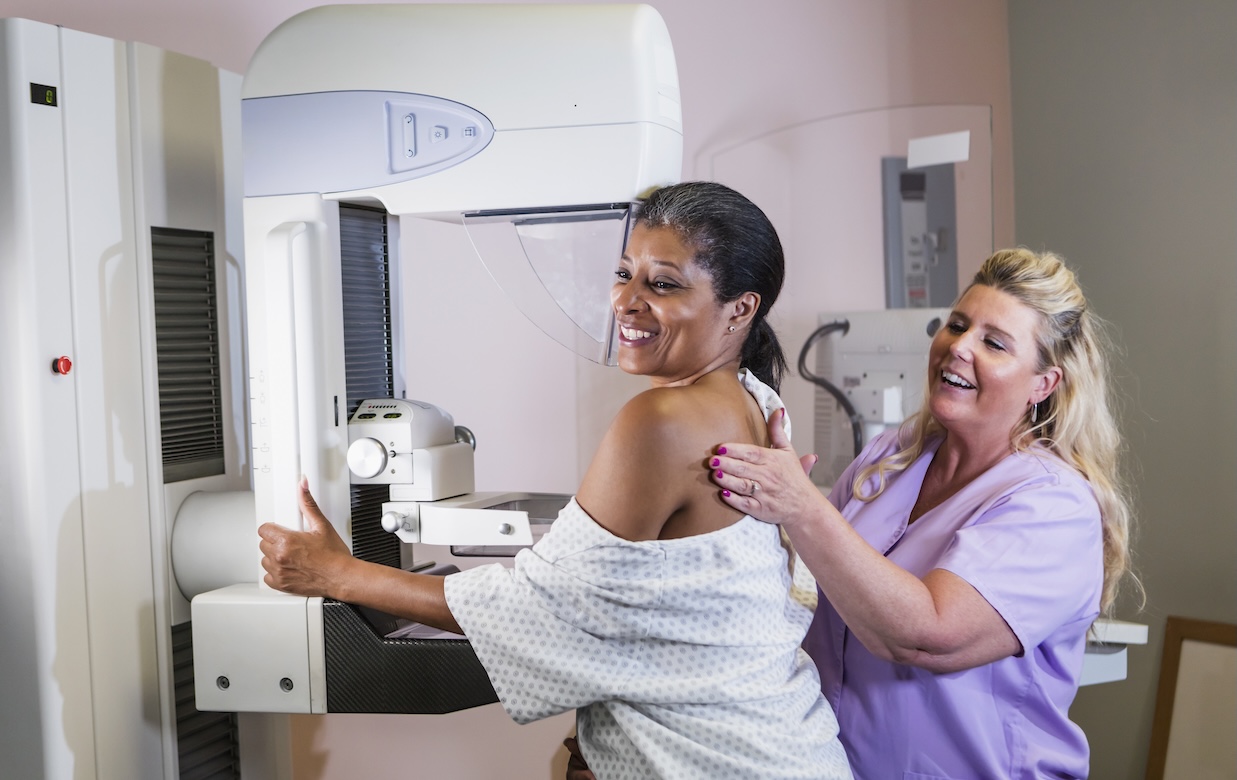From the Mummers Parade to her Inspira care team, Christina Camuccio found strength in every note of...
Read More
About 40 percent of women and people assigned female at birth (AFAB) have dense breasts, something that not only increases your risk of developing breast cancer but also reduces the effectiveness of mammography—the traditional breast cancer screening.
That’s a pretty significant number considering the 242,000 cases of breast cancer diagnosed in the United States every year.
New guidelines from the U.S. Preventive Services Task Force (USPSTF) recommend beginning breast cancer screenings at age 40 and continuing every other year. However, if you have dense breasts, you may need more than the traditional mammogram.
Learn more about the importance of specialized screenings and tailored support for individuals with dense breast tissue.
Individuals with dense breasts have a greater risk of developing breast cancer. “We’re not exactly sure of the mechanism,” explained Nandini Kulkarni, M.D., medical director of surgical oncology at Inspira Health. “However, we know that cancers often develop in glandular tissue, and the more glandular tissue you have, the greater your risk. So the more dense breast tissue you have, the higher your risk of breast cancer.”
Breast density is usually determined during a person’s first mammogram and is categorized into four levels: almost entirely fatty, scattered areas of fibroglandular density, heterogeneously dense and extremely dense. Heterogeneously dense and extremely dense breasts are considered dense—but having some fibroglandular tissue is normal and not necessarily concerning. The higher levels of density indicate more fibrous and glandular tissue compared to fatty tissue, which can make it harder to detect abnormalities.
The size or shape of your breasts do not determine density—it can only be detected through a mammogram. While all breast cancer screenings must start with a mammogram, people with dense breasts usually need a supplemental imaging test to properly screen for cancer.
“Dense tissue appears white on mammograms—the same color as potential tumors,” said Dr. Kulkarni. “This similarity in appearance can obscure small masses or lumps and make it difficult to distinguish between normal dense tissue and potential cancerous growths.”
Several factors can influence breast density, including:
Recent updates to the Mammography Quality Standards Act (MQSA) now require that all mammography reports include information about breast density. Patients will now receive a clearer breast tissue assessment, along with an explanation of how dense tissue can affect mammogram accuracy and breast cancer risk. These updates help standardize how breast density information is communicated, ensuring patients receive consistent guidance.
While mammography is the recommended standard for initial screening for breast cancer, adding a supplemental screening can help identify cancers not found through a traditional mammogram.
“Your physician may recommend additional imaging tests such as ultrasound or MRI,” said Dr. Kulkarni. “Ultrasound screenings can help differentiate between solid masses and cysts, while MRIs offer a more detailed view of the breast tissue without being affected by its density.”
Here are three types of supplemental screenings for dense breasts:
Understanding the complexities of dense breast tissue is essential for effective screening and early detection. Regular breast self-exams can help you notice changes that might require a professional's assessment.
"Understanding your family history and discussing your risks with your physician is the best way to determine an effective screening approach," said Dr. Kulkarni. "Also, consider lifestyle changes like eating a balanced diet, exercising regularly and reducing alcohol intake to lower your breast cancer risk."
Staying informed and proactive allows you to manage your breast health confidently and accurately. With the new regulations in place, you’ll be better equipped to understand your breast density and make informed decisions about your screenings.
Detect breast abnormalities before symptoms appear. Schedule your mammogram today.

From the Mummers Parade to her Inspira care team, Christina Camuccio found strength in every note of...
Read More
Prostate cancer is the second most common cancer in men. While metastatic disease can feel daunting...
Read More
Join us as we look back on a heartwarming day of love, laughter and resilience. Our annual Cancer...
Read More